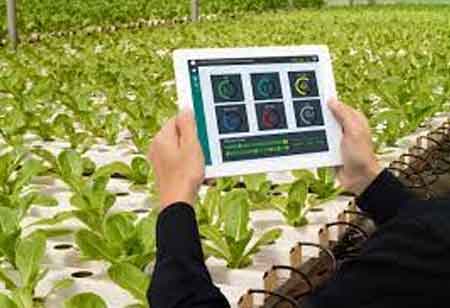

Thank you for Subscribing to Agri Business Review Weekly Brief

What according to you are the significant trends and challenges that have been affecting the agriculture industry in recent times?
Kristopher: From my perspective, I believe that one of the most rapidly developing areas in the agriculture industry is carbon farming and its various stages like regenerative agriculture and carbon credit farming. Our primary focus is on carbon farming to produce carbon negative grains. Despite that, one of the major challenges we face is getting farmers involved and educated about the process, the costs involved, and the nitty-gritty of it all. We have put a significant amount of effort into outreach to find farmers who are already practicing these methods and fine-tuning the farming steps and measurements in collaboration with universities and experts to accurately measure the carbon sequestration in the ground. Our first priority is to engage and educate growers about what they are capable of and what the end goal is. The second priority is to demonstrate the economic benefits that come with carbon farming like premiums paid for carbon negative grains, improved yields, and increased drought sustainability. We strive to develop a comprehensive approach for each grower, which goes beyond a short-term investment, but a fundamental change in their farming processes that drive yearly improvement and profitability. I am thrilled about the new technologies that are emerging in the industry every week like fertilizer application methods and seed and equipment advancements. As we build profitable business models for farmers, it allows them to continue investing in new technology, which drives more profitability and enables us to sequester carbon in the soil and reduce greenhouse gas emissions in the air. Mark: In my opinion, the most significant challenge facing the agriculture industry today is climate change. One of our oat farmers had a very successful carbon farming year in which the produce sequestered more carbon in the ground than it emitted in production. The following year, a heatwave caused a significant drop in yield. This experience emphasized the urgency to accelerate the transition to regenerative agriculture practices and mitigate greenhouse gas emissions that cause climate change. It is clear that agriculture must adapt to these changing conditions, from what crops they plant to how they approach carbon farming technologies. Carbon farming offers an excellent nature-based solution to reduce greenhouse gas emissions while regenerating soil health. It is our responsibility to address climate change holistically and transform all systems to mitigate the impact of greenhouse gas emissions. What specific developments in the agricultural business do you find concerning and are there any particular issues on the horizon that you believe are worth looking forward to? Mark: Personally, what truly concerns me is the alarming pace at which our climate is shifting and how we can set up a food system that can adapt swiftly and withstand these changes. It is a thought of how long we have until we need to safeguard our agricultural system that keeps me up at night. Kristopher: I completely agree with Mark, as the accessibility of food has become increasingly challenging due to factors like climate change and geopolitical impacts, which make it more difficult to supply affordable food to consumers. It is imperative that we prioritize these areas, and our primary goal is to address the issue of climate change. We aim to establish a network of growers who can consistently produce high-quality food and maintain a stable food supply. As my colleague mentioned earlier, the success of our first farm could not be replicated, which highlights the importance of building a solid foundation of individuals who can continually cultivate crops to sustain our food supply. Nick: The challenge also lies in scaling up our operations to meet the increasing demand for sustainable farming practices. With technology rapidly evolving, we see an increased number of farmers adopting these methods, which is encouraging. However, as a company, we must ensure that we meet the demands of our customers. The question is how we can integrate this technology into mainstream products distributed by retailers at a scale. We must consider how to grow the brand and whether it is possible to do so. Ultimately, it comes down to overcoming the challenges of supply and demand, which is a significant factor in this endeavor. Kristopher: We recognize that simply farming differently is not enough. We have created a comprehensive business model that encompasses the entire supply chain, from the farm to the consumer, to create true demand for sustainable products. Our goal is to have consumers demand these products, retailers carry them, and farmers grow them. Once we have this framework in place, we believe there will be greater stability within the supply chain.I am thrilled about the burst of innovation in ag tech right now, particularly in the area of carbon sequestration. With new technology like CRISPR, we can breed plants that sequester more carbon